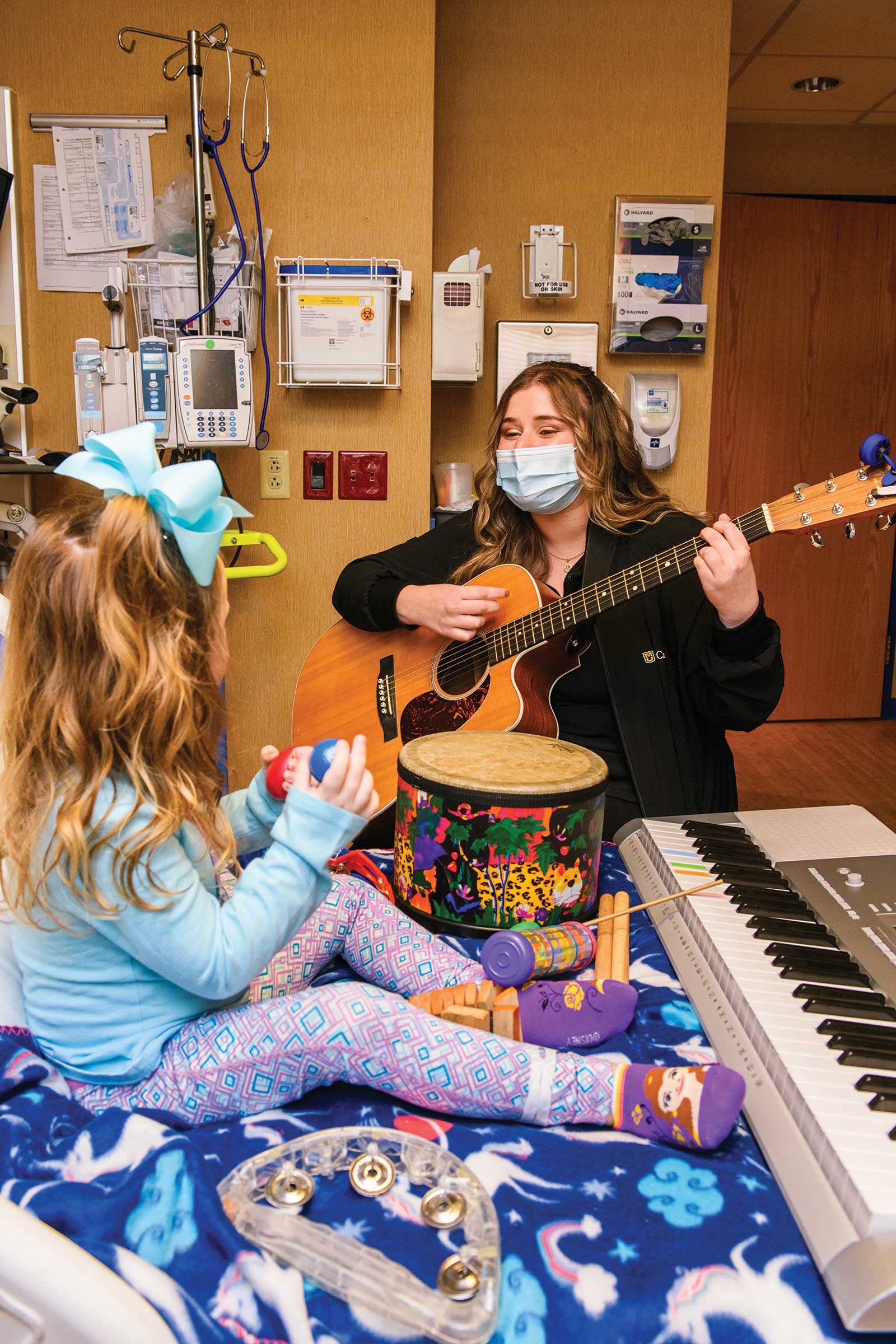Soothing with Music

MU Women’s and Children’s Hospital uses music therapy to help improve patients’ health.
“Music hath charms to soothe the savage breast, to soften rocks, or bend a knotted oak,” William Congreve penned in 1697.In modern times, doctors at Columbia’s MU Women’s and Children’s Hospital have also found that music works as therapy for patients.
Music therapy is a young field, and the music therapy program at MU Women’s and Children’s Hospital has only been in practice for about eight years. Still, doctors have already seen this therapy improve hospital patients’ health.
Emily Pivovarnik, a licensed music therapist at the hospital, says: “Music therapy can reach anyone, from a premature infant all the way up to someone in hospice care. The appropriateness depends on the needs.”
Emily says that music therapy has helped patients with nausea relief, relaxation, pain management, and reduced trauma during hospitalization.
Though music therapy helps patients of various ages, it’s most often used to help children.
Emily says, for kids, this is “really great because [music therapy] is non-invasive. We’re not making them do anything that hurts or is hard for them to do.”

During music therapy sessions, patients are encouraged to sing, play an instrument, or write lyrics. When unwillingness to participate is a problem, Emily works to make her patients feel more comfortable or to abate their fears. This means a music therapy session may take anywhere from 15 minutes to an hour.
The individuality, personality, and medical issues of the patient are also considered when Emily approaches a music therapy session.
“We’re always using patient-preferred music,” Emily says. “If the goal of the patient is to decrease stress or relax, I’m not going to push them. But if I’m teaching them a song on how to tie their shoe, I may push them. It really depends on the situation.”
In addition to destressing, one of the goals in music therapy is to teach the patients skills that help them deal with their current situation, whatever that might be. In the hospital, “kids are fearful — this is a different environment for them, [and] parents may not be with them,” Emily says. “They’ve lost control, they don’t know what’s going on, and they can’t go to school.”
However, through music therapy, patients can regain a significant form of control and stability.
“We’re teaching them a coping skill they can use throughout hospitalization and use outside of the hospital,” Emily says.
Sometimes, Emily’s dedication to helping her patients even leads to a patient discovering a newfound talent. She has already seen patients who are motivated enough to continue learning music once they leave the hospital.
Though patients in music therapy have seen some wonderful improvements, Emily emphasizes that music therapy is not a perfect cure. Sad experiences can happen in a hospital, but by being there to help her patients with music therapy, she’s improving their lives.
“I would never walk into a patient’s room and say I have the magic cure, but we have seen positive influences in patients,” she says. “Even the soothing [music] is great for our kids or babies who are here and are really stressed out. We [work] to get kids up and moving.”
Emily believes that the foundational goal behind the hospital’s music therapy program is “to help out the kids and to make their hospital experiences are as good as possible, despite the circumstances.”


